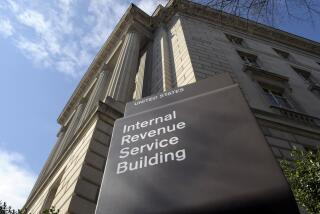White House Admits More Costly Bailout : S&Ls;: Bush spokesman responds to GAO report estimating red ink will be $77 billion more than Administration believed.
- Share via
WASHINGTON — The Bush Administration conceded today that the savings and loan bailout will cost taxpayers more than previously estimated.
“There’s no question that the cost is increasing and we’ll have to take that into account in deciding future actions,” said White House spokesman Marlin Fitzwater.
His comments were in response to Friday’s report by the General Accounting Office--an investigatory arm of Congress--that the 10-year cost of the program would be $243 billion instead of the $166 billion estimated by the Administration.
Furthermore, the GAO said, the 30-year cost of the program could reach $325 billion.
“We don’t have an analysis either to endorse or reject the GAO numbers, except to say there clearly is going to be additional costs,” Fitzwater said. “Those numbers will have to be decided upon at some point.”
Fitzwater rejected as “total nonsense” the contention by Charles Bowsher, the GAO’s comptroller general, that the Administration had deliberately understated the cost of the bailout.
Bowsher, interviewed on NBC’s “Meet the Press,” said the Bush Administration had set an artificially low cost on the bailout so the government could appear to meet deficit-reduction targets.
Fitzwater said the Resolution Trust Co., set up to oversee the restructuring of the S&L; industry, had so far used about $10 billion of the $50 billion it was provided under the bailout legislation signed by Bush last summer.
“At this time there is not enough information to make a reliable estimate of how much more may be required. Many factors will determine if we need more funds--including loss ratios, interest rates, asset sales et cetera,” Fitzwater said.
Asked if the net effect will be an increase in the federal deficit, Fitzwater said: “There is always that consequence. If you have to increase amounts, you have a responding impact on the deficit and budgetary considerations.”
More to Read
Get the L.A. Times Politics newsletter
Deeply reported insights into legislation, politics and policy from Sacramento, Washington and beyond. In your inbox twice per week.
You may occasionally receive promotional content from the Los Angeles Times.










